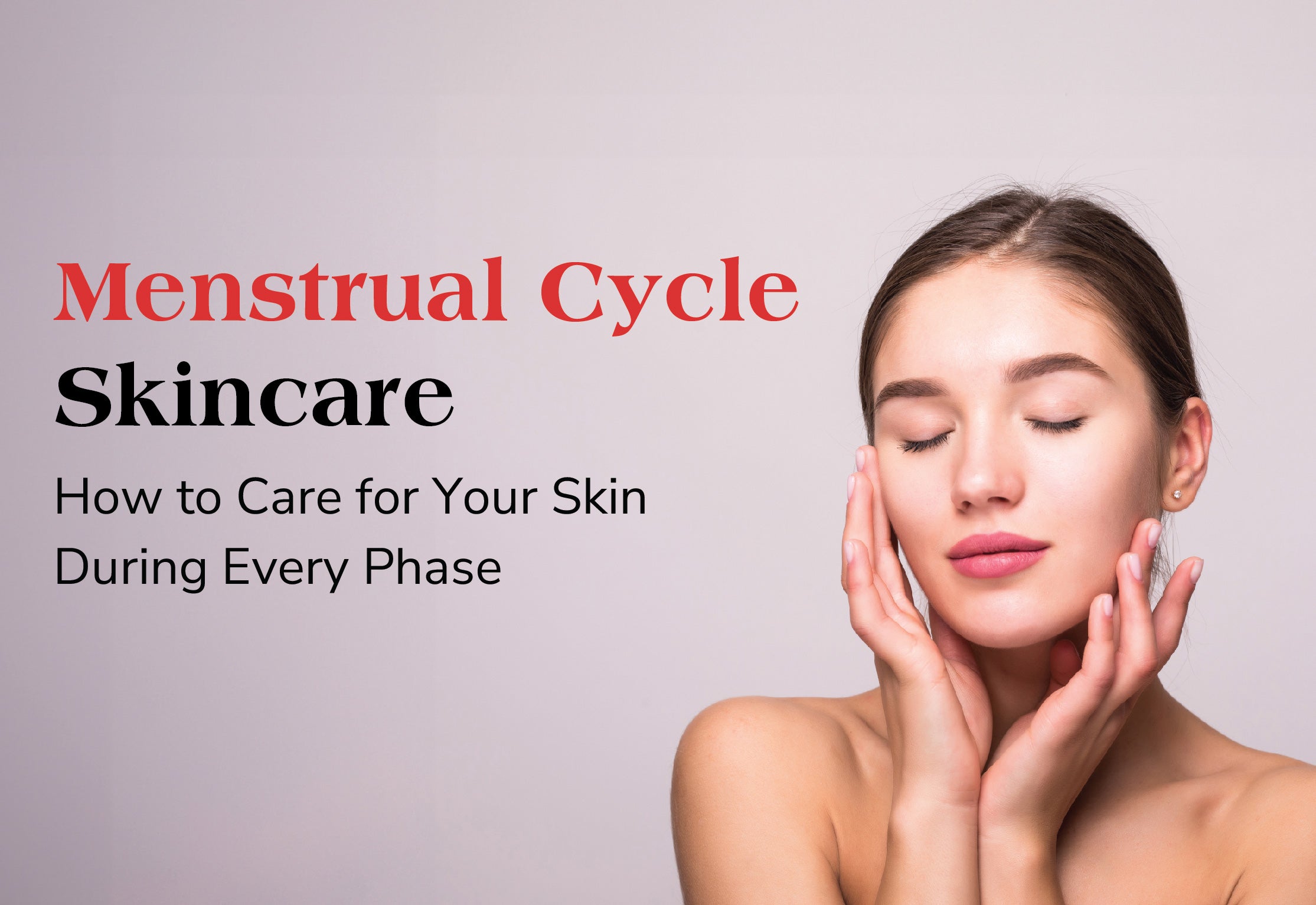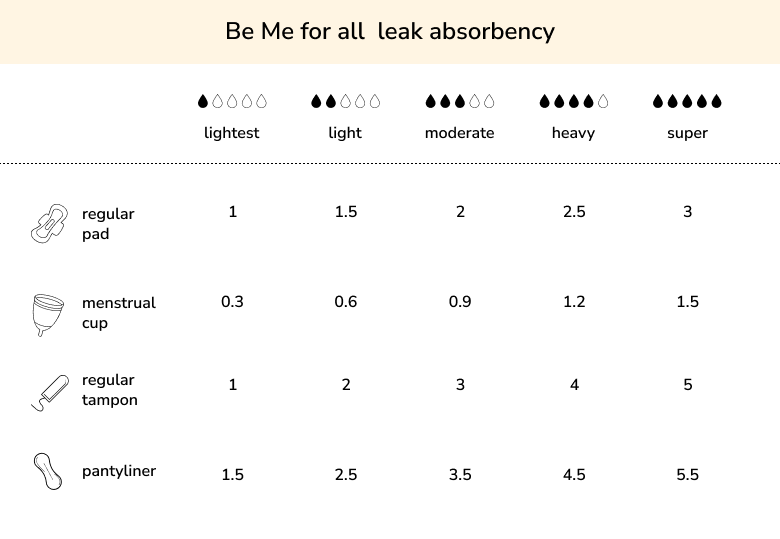
Menstrual Cycle Skincare: How to Care for Your Skin During Every Phase
Published At
Our menstrual cycle influences not just our mood and energy but also our skin. Whether it's pre-period breakouts or mid-cycle glow, hormonal fluctuations during the menstrual cycle have a significant impact on how our skin behaves.
Understanding these changes and tailoring your skincare routine accordingly can help you maintain healthy, radiant skin throughout the month. Let's dive into the world of menstrual cycle skincare and learn how to care for your skin during each phase.
What Happens to Your Skin During the Menstrual Cycle?
The menstrual cycle typically lasts 28 days and consists of four main phases: the menstrual phase, the follicular phase, the ovulation phase, and the luteal phase. Each phase is marked by specific hormonal changes that influence your skin in different ways:
1. Menstrual Phase (Days 1-5)
Hormone levels (estrogen and progesterone) are at their lowest, leading to dryness, dullness, and sensitivity.
2. Follicular Phase (Days 6-13)
Estrogen levels begin to rise, promoting collagen production and giving your skin a more hydrated and plump appearance.
3. Ovulation Phase (Days 14-16)
Estrogen peaks and your skin glows with increased radiance and elasticity. However, pore size may appear larger due to elevated oil production.
4. Luteal Phase (Days 17-28)
Progesterone dominates, causing excess sebum production, which can lead to clogged pores, acne, and inflammation.
Skincare Tips for Each Phase of the Menstrual Cycle

1. Menstrual Phase Skincare: Combat Dryness and Sensitivity

During the menstrual phase, low estrogen levels cause the skin barrier to weaken, making your skin more prone to dryness and irritation. Here's how to care for your skin:
Hydration is Key:
Use a gentle, hydrating cleanser to avoid stripping the skin of its natural oils. Opt for moisturizers rich in ceramides and hyaluronic acid to lock in moisture.
Soothe Sensitivity:
Incorporate calming ingredients like aloe vera, chamomile, or niacinamide to reduce redness and irritation.
Avoid Harsh Products:
Stay away from exfoliants or retinoids during this phase, as they may exacerbate sensitivity.
SPF is a Must:
Your skin can be more vulnerable to environmental stressors, so apply a broad-spectrum sunscreen even if you're indoors.
Product Tip: Look for a fragrance-free, hydrating serum to boost moisture levels without irritating.
2. Follicular Phase Skincare: Embrace the Glow

The follicular phase is when your skin starts to recover from the dryness of the menstrual phase. Rising estrogen levels enhance collagen production and improve skin elasticity. This is the perfect time to focus on repair and rejuvenation.
Gentle Exfoliation:
Use mild chemical exfoliants like lactic acid to remove dead skin cells and promote a smoother complexion.
Hydrate and Protect:
Stick to a light moisturizer and layer it with a vitamin C serum to boost radiance and protect against free radicals.
Prep for Treatments
This is a great time to introduce active ingredients like alpha hydroxy acids (AHAs) or peptides, as your skin is less sensitive and can tolerate them better.
Product Tip: Choose a lightweight gel-based moisturizer to keep your skin hydrated without clogging pores.
3. Ovulation Phase Skincare: Maintain the Glow and Prevent Breakouts

The ovulation phase is often referred to as the "skin's golden hour." Estrogen peaks, giving your skin a natural glow. However, increased oil production can also lead to breakouts if not managed properly.
Keep it Balanced
Opt for a gentle, balancing cleanser to control excess sebum without over-drying the skin.
Spot Treatment
If you notice early signs of breakouts, use a salicylic acid-based spot treatment to prevent acne from worsening.
Focus on Pore Care
Clay masks can help absorb excess oil and minimize the appearance of pores.
Product Tip: Incorporate a niacinamide serum to regulate oil production and reduce the likelihood of breakouts.
4. Luteal Phase Skincare: Manage Acne and Inflammation

The luteal phase is when your skin is most likely to break out due to increased progesterone levels. Sebum production is at its peak, and you may experience premenstrual acne, inflammation, or clogged pores.
Control Oil
Use a salicylic acid cleanser to prevent clogged pores and treat existing breakouts.
Calm Inflammation
Look for anti-inflammatory ingredients like green tea extract, zinc, or Centella Asiatica.
Hydration Matters
Even if your skin feels oily, don't skip moisturizer. Use an oil-free, non-comedogenic formula to keep your skin hydrated without adding to the greasiness.
Don't Pick at Acne
Picking at your skin can worsen inflammation and lead to scarring.
Product Tip: Spot patches with acne-fighting ingredients like hydrocolloid can help heal breakouts faster while preventing bacteria from spreading.
General Skincare Tips for a Healthy Menstrual Cycle Routine
Track Your Cycle
Use a period tracker app to anticipate skin changes and adjust your routine accordingly.
Listen to Your Skin
Everyone's skin responds differently to hormonal changes. Pay attention to what works for you.
Stay Consistent
A consistent skincare routine tailored to your menstrual cycle can improve skin health over time.
Stay Hydrated
Drink plenty of water throughout your cycle to maintain overall skin health.
Diet Matters
Include skin-friendly foods like omega-3-rich salmon, leafy greens, and antioxidant-packed berries.
FAQs About Menstrual Cycle Skincare
1. Can hormonal changes cause permanent skin damage?
While hormonal changes can lead to temporary issues like acne or dryness, they typically don't cause permanent damage. However, neglecting proper skin care can lead to long-term concerns like scarring or uneven texture.
2. Should I use different products during each phase?
It's not necessary to overhaul your routine, but tweaking it slightly (e.g., using a salicylic acid cleanser during the luteal phase) can help address specific skin concerns.
3. Are breakouts during periods normal?
Yes, hormonal fluctuations during the luteal phase can cause excess sebum production, leading to acne. Adopting a targeted skincare routine can help minimize these breakouts.
Final Thoughts on Menstrual Cycle Skincare
Your skin deserves as much care and attention as the rest of your body during your menstrual cycle. By understanding how hormones impact your skin and tailoring your skincare routine to each phase, you can prevent common issues like dryness, acne, or dullness. Remember, consistency and listening to your skin are key to achieving a healthy, radiant complexion throughout your cycle.
Start incorporating these menstrual cycle skincare tips into your routine today and notice the difference in how your skin feels and looks all month long. Whether it's hydrating during your period or controlling oil during the luteal phase, small changes can lead to big improvements in your skin health.









